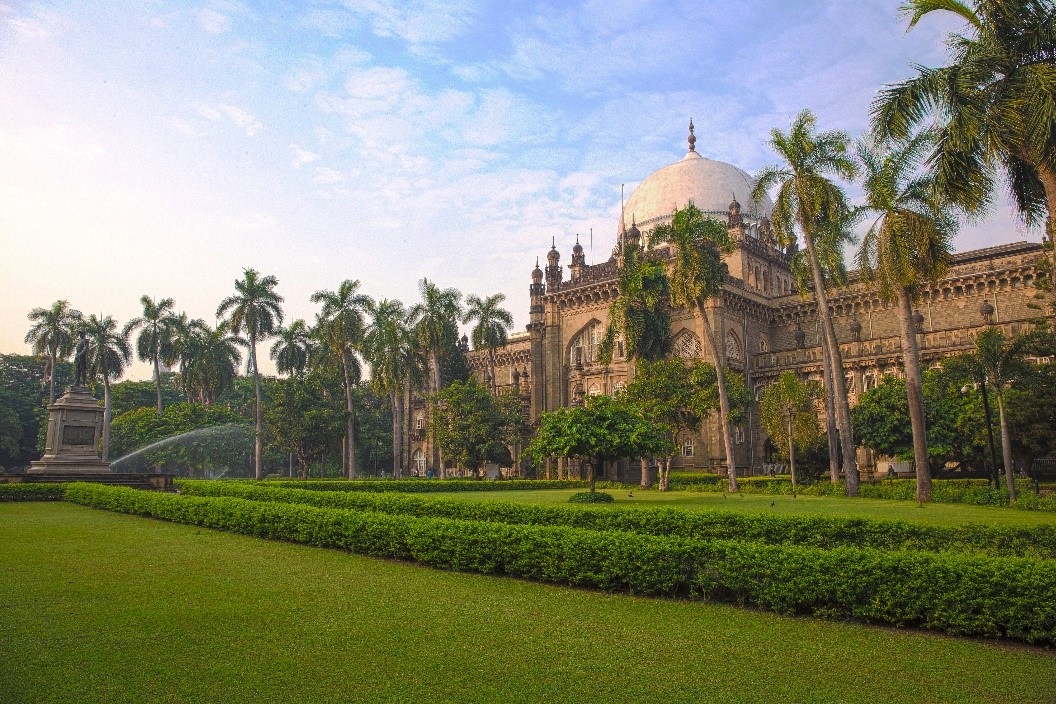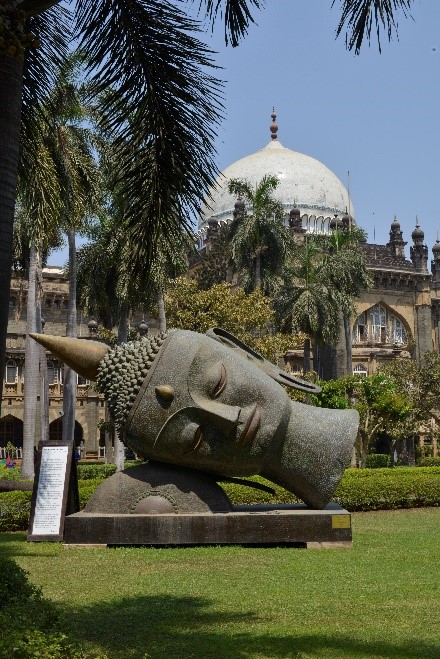Ministry of Culture
Mumbai’s "Chhatrapati Shivaji Maharaj Vastu Sangrahalaya" steps into its centenary year
प्रविष्टि तिथि:
10 JAN 2022 3:38PM by PIB Mumbai
Mumbai, 10 January 2022
The Chhatrapati Shivaji Maharaj Vastu Sangrahalaya (CSMVS) in Mumbai turned 100 years old today (January 10, 2022). It is a landmark event, not only in the history of the Museum but for the cultural movement of the country. The Museum has played an important role as the custodian of the country’s heritage for all these years.
A people’s idea to create the Museum
The Museum opened its doors to the public on 10th January 1922, but the idea germinated in the year 1904 by a few enthusiastic citizens who wished to give the economic city of the then Bombay a gift of cultural legacy.
In 1904, a resolution was passed by the Government of Bombay Presidency and a committee was formed to determine the feasibility of having a public Museum in Bombay. Some of the eminent citizens of the city — Sir Pherozeshah Mehta, Sir Ibrahim Rahimtulla and Sir Vithaldas Thackersey, were members of this committee. It was proposed that the Museum of Art and Archaeology should be combined with a Museum of Science and Natural History and Industrial Art. The members of the Board also desired that the Museum should inspire and give stimulus to visitors, and especially to the children and youth of India, and that the main objective of the Museum should be educational.
Collections
The first object came to the Museum in the year 1906 — a plaster cast head of the Buddha created and donated by Lockwood Kipling.
The priceless artefacts from the Buddhist site of Mirpurkhas, excavated by renowned archaeologist Henry Cousens in 1909 are an important part of the Museum collection. Seth Purushottam Mavji’s collection of antiquities and miniatures was purchased by the Trustees in 1915, and antiquities acquired from the Archaeological Survey of India have enriched the grand collection of the Museum. The year 1922 was marked with the bequest received by Sir Ratan Ji Tata. The encyclopaedic collection built up by Sir Ratan Ji Tata which was previously displayed in his house at York House London was bequeathed to this Museum according to his will. In the subsequent years, in 1933, the collection of Sir Dorab Tata came to the Museum as a bequest. Besides outstanding Indian antiquities such as textiles, arms, bronzes, and paintings, the Tata collection also comprises of European, East-Asian, and Southeast Asian art as part of this magnanimous gift.
Over the past century, the Museum’s wide-ranging collections have grown to about 70,000 objects, telling the human story, especially of the Indian subcontinent, right from pre-historic time to the present. A multitude of other collections bequeathed to the Museum by individual collectors enriched the repository of the Museum to a great extent. The collection includes the gracious gifts received from Sir Akbar Hydari, Alma Latifi, Amravati Gupta, Karl Khandalavala, Veena Shroff, Dr. Pheroza Godrej and Pauline Rohatgi, Ernst and Mischa Jenkel, and Kuldip Singh. Catering to the needs of contemporary art lovers, Jehangir Nicholson’s collection of works of modern and contemporary arts from India is also housed at the Museum premises. This collection is currently on a 15-year loan to the Museum and it has added a modern and contemporary dimension to the Museum’s collection.

Director General of CSMVS Sabyasachi Mukherjee said, “Chhatrapati Shivaji Maharaj Vastu Sangrahalaya (CSMVS) is a cultural, as well as a social space and also a meeting place for communities to engage in dialogue and exchange of ideas. The Museum plays a direct role in preserving and enriching the community in which it is sustained. As the Museum evolves and grows in popularity, it becomes more accountable to the different communities living in the city.”

In the year 1923, The Natural History Section was jointly established by the Bombay Natural History Society and the Trustees of the Museum. An attractive collection of the minerals of Bombay Island gathered by Mr. Jayme Ribeiro was also donated to the Museum. Dr. Salim Ali, the famous ornithologist, was the first Guide lecturer of this section. A significant collection of antiquities was lent to the Museum by the Bombay Branch of the Royal Asiatic Society. In the year 1928, the Trustees acquired the collection of decorative arts from the J.J. School of Art.
CSMVS continues to collect objects and its curators are actively engaged in researching the collections. Art historians from all over the world have consulted and visited the Museum for research work. The Museum publishes a Research Journal annually to encourage original research among senior and young scholars in the field of art history and archaeology. In 2019, the Museum opened Mumbai’s first Children’s Museum. The Museum’s flagship programme — Museum on Wheels, takes exhibitions across Maharashtra and Gujarat to schools and educational institutions in a bus.
CSMVS collaborates with various other institutes and organises several exhibitions and lectures. It also presented exhibitions on Indian culture in Japan, Sweden, Mauritius, the USA, and the UK. Over a million visitors every year experience a sense of joy and pride, and gain an understanding of human history as they stroll through the Museum's galleries and beautiful heritage garden.
* * *
(Source: CSMVS)-PIB Mumbai/SC/DR
Follow us on social media:  @PIBMumbai
@PIBMumbai  /PIBMumbai
/PIBMumbai  /pibmumbai
/pibmumbai  pibmumbai[at]gmail[dot]com
pibmumbai[at]gmail[dot]com
(रिलीज़ आईडी: 1788923)
आगंतुक पटल : 2475
इस विज्ञप्ति को इन भाषाओं में पढ़ें:
Marathi